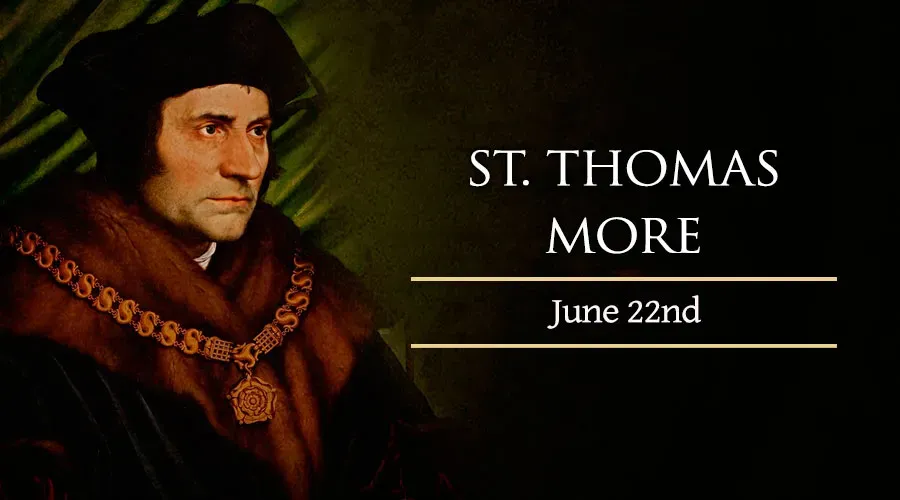Sub-Saharan Africa, 22 June, 2025 / 11:15 am (ACI Africa).
On June 22, the Catholic Church honors the life and martyrdom of St. Thomas More, the lawyer, author and statesman who lost his life opposing King Henry VIII's plan to subordinate the Church to the English monarchy.
Thomas More was born in 1478, son of the lawyer and judge John More and his wife Agnes. He received a classical education from the age of six, and at age 13 became the protege of Archbishop John Morton, who also served an important civic role as the Lord Chancellor. Although Thomas never joined the clergy, he would eventually come to assume the position of Lord Chancellor himself.
More received a well-rounded college education at Oxford, becoming a “renaissance man” who knew several ancient and modern languages and was well-versed in mathematics, music and literature. His father, however, determined that Thomas should become a lawyer, so he withdrew his son from Oxford after two years to focus him on that career.
Despite his legal and political orientation, Thomas was confused in regard to his vocation as a young man. He seriously considered joining either the Carthusian monastic order or the Franciscans, and followed a number of ascetic and spiritual practices throughout his life – such as fasting, corporal mortification, and a regular rule of prayer – as means of growing in holiness.
In 1504, however, More was elected to Parliament. He gave up his monastic ambitions, though not his disciplined spiritual life, and married Jane Colt of Essex. They were happily married for several years and had four children together, though Jane tragically died in childbirth in 1511. Shortly after her death, More married a widow named Alice Middleton, who proved to be a devoted wife and mother.







